Outforia Quicktake: Key Takeaways
- Dinosaurs are reptiles, belonging to the clade Archosauria, which also includes other reptiles and birds.
- Dinosaurs differ from other prehistoric reptiles with their upright stance, legs located beneath the body, and unique pelvic structure, including saurischian and ornithischian dinosaurs.
- The first use of the term “Dinosauria” was by Sir Richard Owen in 1842 based on the similarities between the fossils of Megalosaurus, Iguanodon, and Hylaeosaurus.
- Recent studies suggest a new clade called Ornithoscelida and possible reorganization of dinosaur family tree.
- Birds are considered living dinosaurs, with discoveries of dinosaur species possessing feather structures.
Dinosaurs are prehistoric reptiles that appeared on Earth about 245 million years ago in the Mesozoic Era. When dinosaurs were first discovered, they were thought to be large, extinct lizard-like reptiles.
Further discoveries led to the creation of their own group, or clade, called Dinosauria.
Dinosaurs share several characteristics of reptilian creatures, but they have a few features that separate them from prehistoric and modern-day reptiles.
What Are Dinosaurs?

Dinosaurs belong to the clade Archosauria. This clade includes reptiles and birds. The only living archosaurs left on Earth include crocodiles and birds.
The clade also includes non-avian dinosaurs and extinct flying reptiles called Pterosaurs.
Prior to the 1800s, the term dinosaur was unheard of. Dinosaur fossils were discovered in the 1600s, but nobody knew what they were. Several fossil discoveries in the early 1800s led to the creation of the Dinosauria clade.
English biologist and paleontologist Sir Richard Owen noticed some similarities between the fossils found in southern England. These early discoveries included fossils of dinosaur genera Megalosaurus, Iguanodon, and Hylaeosaurus.
The term Dinosauria was first used by Owen in his publication Report on British Fossil Reptiles in 1842. This was the first time that these mysterious extinct creatures were put into a category of their own.
Dinosaurs and reptiles share similar characteristics and anatomical structures, so does that mean dinosaurs are reptiles?
You May Also Like: Animals That Lay Eggs: The World’s Most Eggs-Ellent Creatures!
Are Dinosaurs Reptiles?
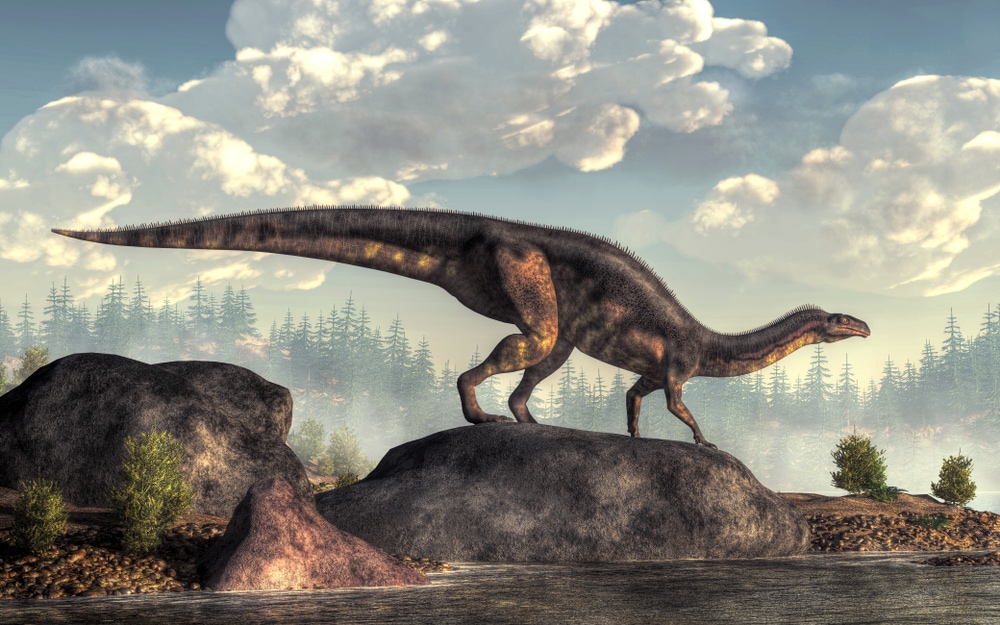
Yes, dinosaurs are reptiles. Dinosaurs are a group of Archosaurs, which includes other reptilians. Dinosaurs and reptiles are different groups of archosaurs. Some similarities between the two include:
- Reproduce by laying eggs
- Have a hole between the eye socket and nostrils
- Possess scales
So what sets dinosaurs apart from any other prehistoric reptile? There are a few differences that have allowed dinosaurs to be classified as a separate group.
All dinosaurs had an upright stance with legs located beneath the body. Other reptiles have a sprawled out stance with the legs located to the sides of the body.
There are two main groups of dinosaurs categorized by their pelvic structure. This includes saurischian and ornithischian dinosaurs.
Saurischian dinosaurs had lizard-like hip bone structures. Ornithischians are called bird-hipped dinosaurs because their pelvic structure is similar to birds. All dinosaurs had an upright stance because they possessed a hole in the hip socket.
There are many prehistoric reptiles that are commonly misrepresented as dinosaurs.
Pterosaurs, better known as Pterodactyls, were flying reptiles that existed amongst dinosaurs. Pterodactyls are commonly referred to as dinosaurs.
However, these prehistoric creatures aren’t true dinosaurs and are described as extinct flying reptiles.
Plesiosaurs were archosaurs classified as extinct marine reptiles, but they aren’t dinosaurs. Although there’s still room for many more dinosaur discoveries, dinosaurs are only known to have lived on land.
Classification of Dinosaurs
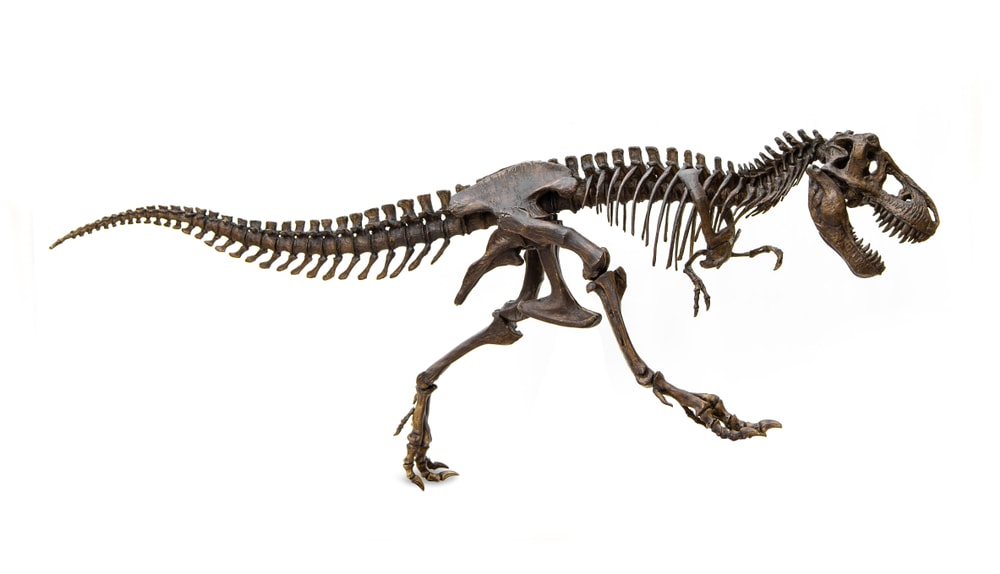
Numerous discoveries made over the past two centuries have given scientists a deeper understanding of dinosaur interrelationships. Since the creation of the clade Dinosauria, dinosaurs have been divided into more subgroups.
What we know about dinosaurs comes from fossil evidence that’s been excavated and studied by paleontologists. So although major breakthroughs have occurred, there are still many questions that have yet to be answered.
A recent study published in 2017 has introduced a new hypothesis about the dinosaur family lineage.
As previously mentioned, dinosaurs had long been categorized into the two main groups of Saurischia and Ornithischia.
The study introduces a new perspective that reorganizes the dinosaur family tree. Before the rearrangement, the original dinosaur family tree has generally been accepted for the past 130 years.
Scientists involved in the study have proposed a new clade of dinosaurs called Ornithoscelida. It also suggests that branches of the saurischians, including sauropodomorphs and theropods, may have different interrelationships than previously thought.
Dinosaurs belonging to the Theropoda clade may be more closely related to ornithischians. The new group Ornithoscelida describes members as bird-limbed dinosaurs.
Are Birds Dinosaurs?
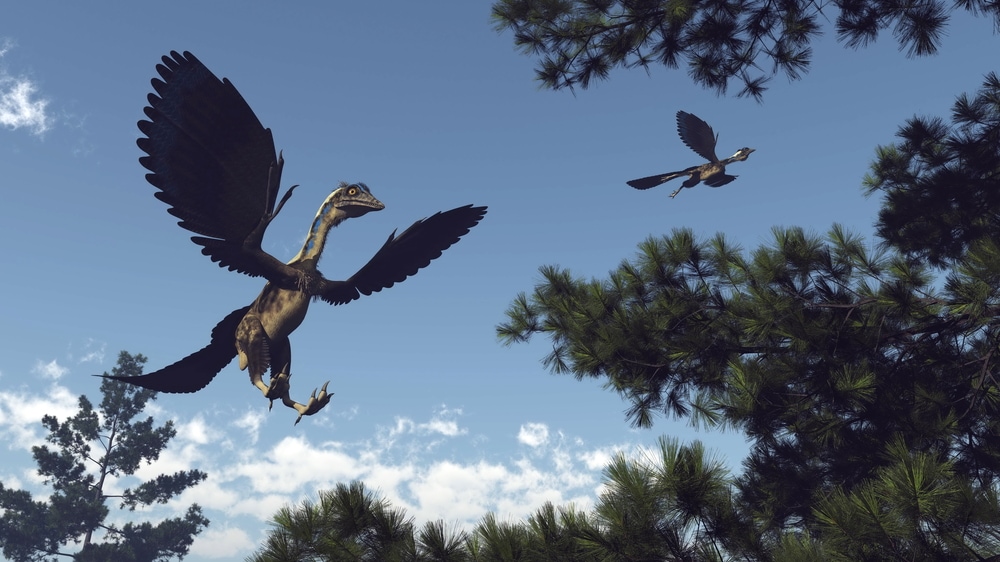
Scientists have long debated whether or not birds are living dinosaurs. The discovery of two new dinosaur species in 1998 has ended much of the debate.
A team of researchers and scientists discovered two new dinosaur species in the Liaoning Province of China. The fossils found are estimated to be about 145 million years old.
The two dinosaurs, Protarchaeopteryx and Caudipteryx, possessed feather structures. Although feathers were discovered in the fossils, they didn’t appear to be used for flight. This suggests that although some dinosaurs possessed feathers, they weren’t used for flying.
Archaeopteryx is one of the earliest known birds discovered. Its name means “ancient wing”.
The Natural History Museum classifies it as a small theropod dinosaur. It was first discovered in southern Germany near Solnhofen.
The fossil was dated to the late Jurassic Period about 147 million years ago. Some scientists believe Archaeopteryx is a transitional genus that connects prehistoric reptiles to the early evolution of birds.
Although some may still be skeptical, it’s generally accepted that birds are living dinosaurs.
When Did Dinosaurs Live on Earth?
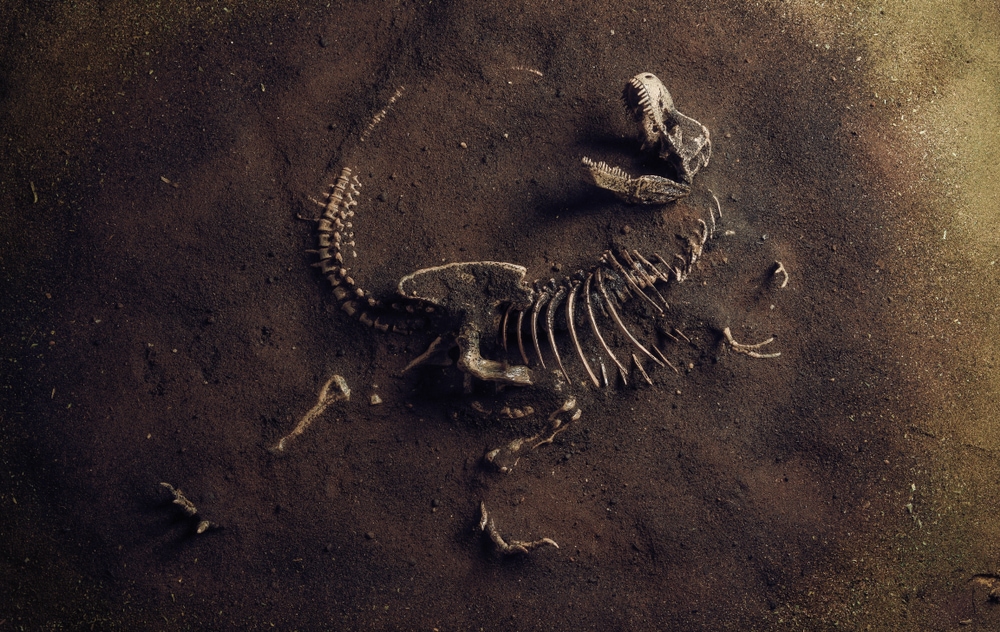
Dinosaurs lived during the Mesozoic Era between 251-66 million years ago. There were many changes happening throughout this period, including the separation of the supercontinent Pangaea.
The Mesozoic Era is split into three periods, which include:
- Triassic Period (252-201 million years ago)
- Jurassic Period (201-145 million years ago)
- Cretaceous Period (145-66 million years ago)
Scientists previously thought that dinosaurs first appeared in the mid to late Triassic. However, the reorganization of the dinosaur family tree and additional fossil evidence suggests dinosaurs may have appeared about 247 million years ago.
It’s possible that new discoveries that may arise could push this date back even further.
It’s unlikely that dinosaurs appeared in the preceding Paleozoic Era (541-252 million years ago).
One of the largest mass extinction events on Earth occurred at the end of the Paleozoic Era in the Permian Period. It’s estimated that about 96% of all living species on Earth died as a result.
The cause of the mass extinction is still up for debate. It may have been caused by massive volcanic eruptions, meteorites hitting Earth, or rapid and significant changes to the climate. The Permian Period was known to support the diversification of reptiles.
Triassic Period
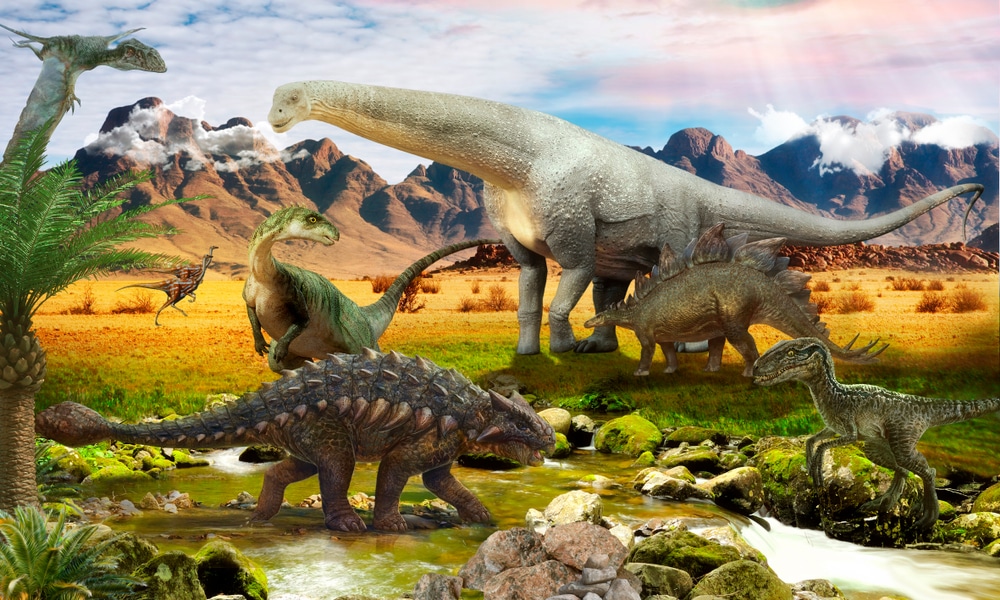
The Earth during the Triassic Period had a hot, dry climate. This allowed reptiles to become the dominant living organisms. The first ancestors to mammals also appeared in this period.
Since all of the land was conjoined into the supercontinent Pangaea, animals living in different places weren’t as diverse.
The continental masses that were once separated during the early Paleozoic Era merged into Pangaea in the Carboniferous Period between 359-299 million years ago.
The earliest fossil evidence we have of true dinosaurs is from the late Jurassic Period about 228 million years ago. Most of the oldest dinosaur fossils we have were found in the Ischigualasto Formation in Argentina.
The discovery of a new species, Nyasasaurus parringtoni, may be the oldest dinosaur fossil ever discovered. The species was first discovered in Tanzania in the 1930s.
Studies of the 240-million-year-old fossil have led some scientists to believe it’s the earliest true dinosaur fossil to be discovered. If it’s not a true dinosaur, some scientists believe it may be a common ancestor between dinosaurs and what they evolved from.
By the end of the Triassic Period, Pangaea began to separate. This would lead to major changes to the Earth’s climate and the evolution of animals in the Jurassic Period.
Jurassic Period
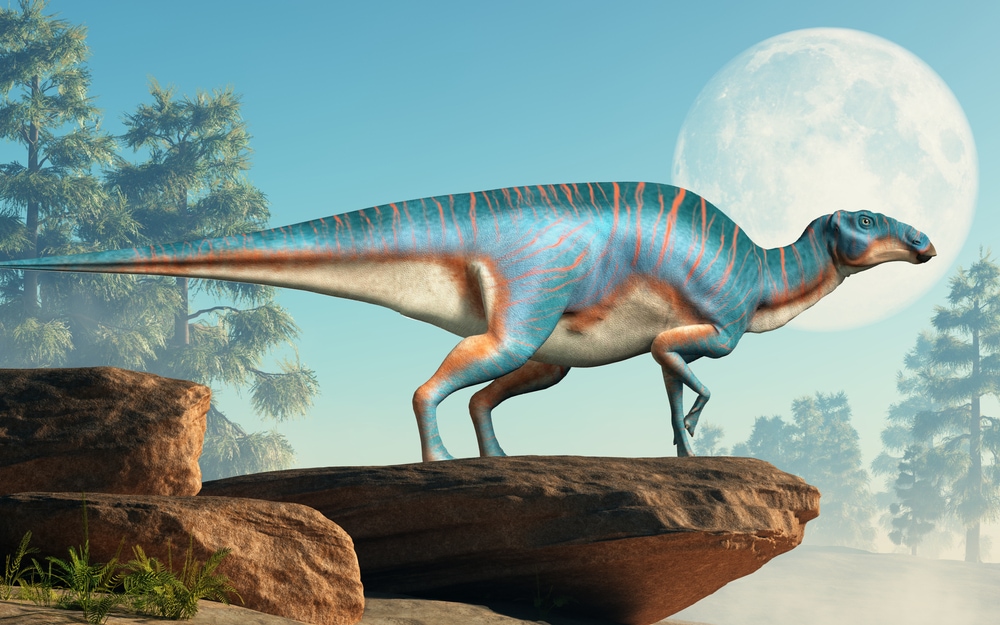
The Jurassic Period is when dinosaurs really began to diversify. There were many different types of dinosaurs, ranging from small carnivorous bipeds to massive herbivores. Flying reptiles, such as Pterodactyls, and prehistoric birds also appeared.
The Atlantic Ocean and Gulf of Mexico first appeared in this period as a result of the separation of Pangaea. This changed the climate of the Earth, which became more tropical.
Pangaea separated into two supercontinental masses. In the northern hemisphere, there was Laurasia. In the southern hemisphere, there was Gondwana. This separation allowed dinosaurs to evolve independently.
One of the first dinosaurs to be discovered, Megalosaurus, first appeared in the mid-Jurassic Period.
Other famous dinosaurs that appeared during the Jurassic included Brachiosaurus, Stegosaurus, and Diplodocus.
Cretaceous Period
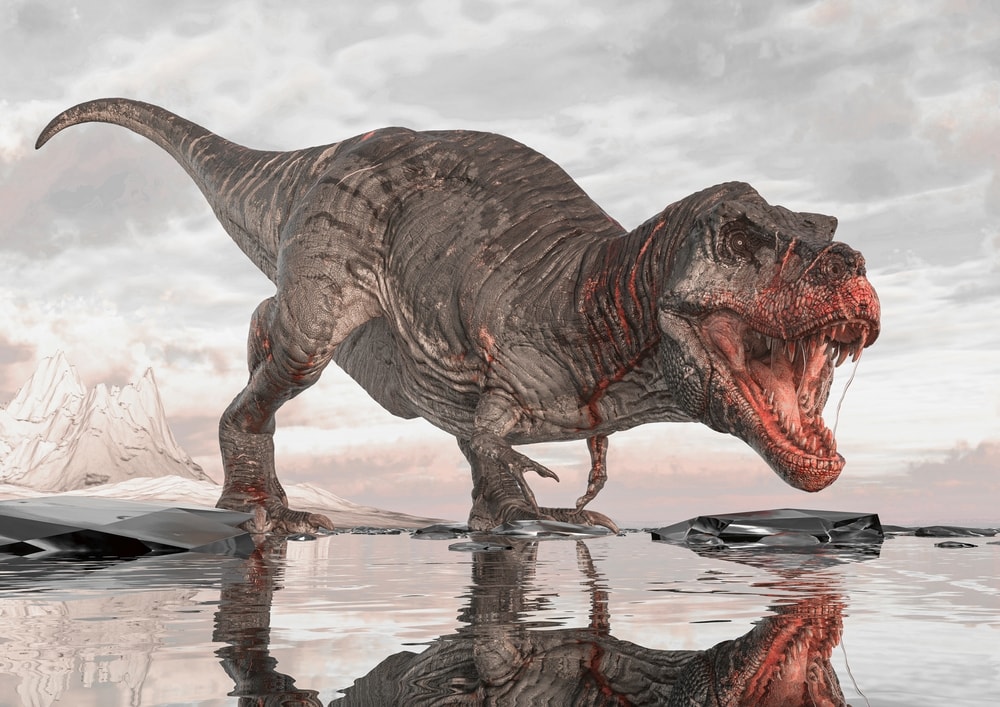
The Cretaceous Period is the final period in the Mesozoic Era. Laurasia and Gondwana separated more, which created several continental islands. More oceans and seas appeared and the climate became more mild.
In the early to mid-Cretaceous Period, more dinosaur species evolved. The first flowering plants appeared, leading to the diversification of many insects. Some dinosaur species went extinct before the end of the period.
Some of the largest dinosaurs to roam Earth appeared in the Cretaceous. This mainly included massive plant-eating dinosaurs such as titanosaurs.
One of the most popular dinosaurs, Tyrannosaurus, appeared in the late Cretaceous Period about 68 million years ago.
The most notable event of the Cretaceous Period was the mass extinction event. About 66 million years ago, a meteorite struck Earth. It wiped out most plant and animal species, including dinosaurs.
The mass extinction event separates the end of the Mesozoic Era from the beginning of the Cenozoic Era. The Cenozoic Era is described as the age of mammals. New mammals were capable of rapid evolution due to less competition.
You May Also Like: Are Mermaids Real? Exploring Ocean Myths And Legends
Types of Dinosaurs
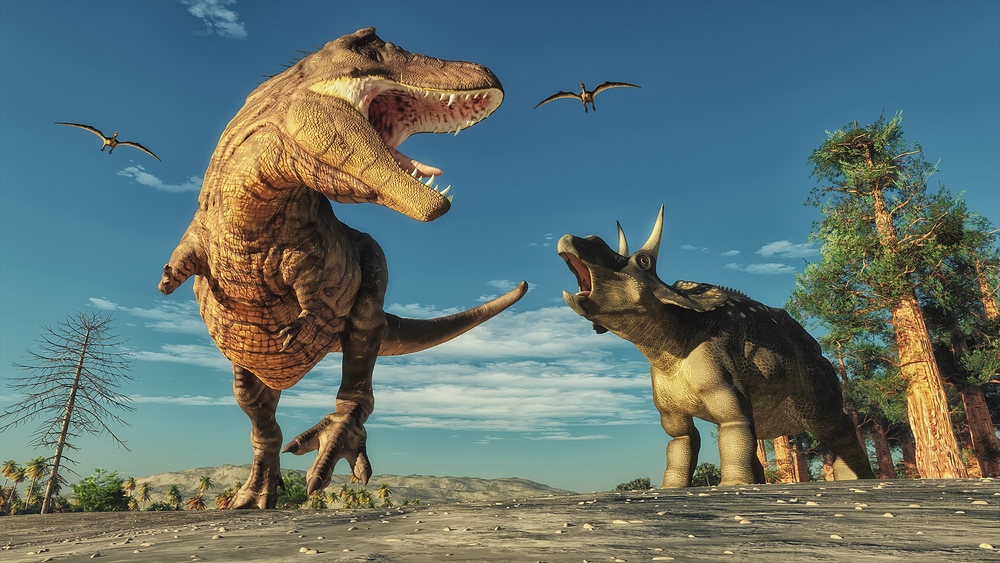
There are many dinosaurs that have yet to be discovered or validly described. However, there are more than 700 known and validly described dinosaur species. These species fall into about 300 different valid genera.
The exact number of dinosaur species to exist may never be known. We can only go off of what fossil evidence has been discovered to properly describe and confirm dinosaur species.
This list of dinosaurs has been separated into the major groups of recognized dinosaurs. Within these major groups, a few popularly known dinosaurs have been selected. However, this is just a small number of dinosaurs out of all known genera or species.
Armored Dinosaurs
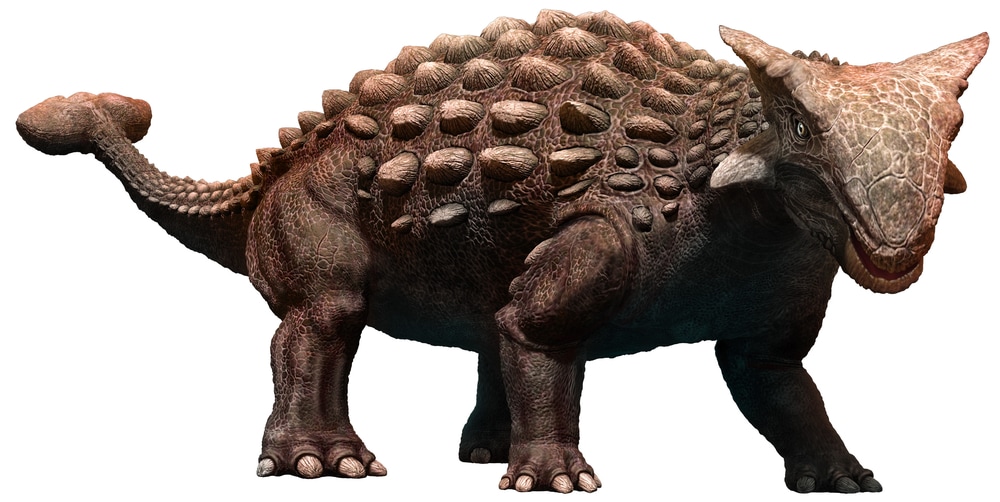
Armored dinosaurs are described as medium-sized dinosaurs that traveled on all four legs. As their name suggests, these dinosaurs had armor plates on their body. Some armored dinosaur species also have barbs or spikes on their tails.
Ankylosaurus

Ankylosaurus is a genus of dinosaurs that lived during the late Cretaceous Period. Their name means “stiff lizard”. These dinosaurs averaged about 23 ft (7 m) and weighed about 8,818 pounds (4,000 kg)!
The first species in the genus described was the Ankylosaurus magniventris. The species was first described by paleontologist Barnum Brown in 1908. Ankylosaurus fossils have been found in Canada and the US.
Gastonia
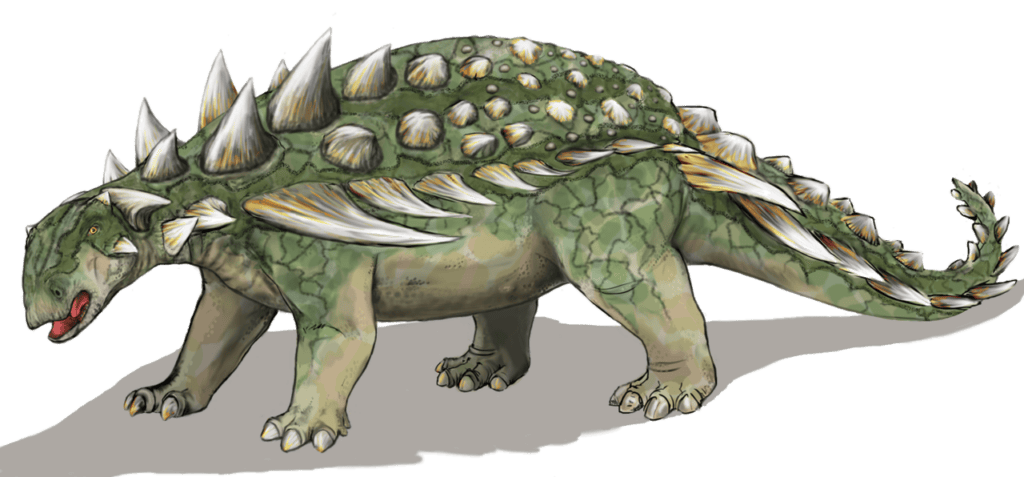
Gastonia dinosaurs lived in the early Cretaceous Period around 142-127 million years ago. These armored dinosaurs averaged about 15 ft (4.6 m) in length. Gastonia fossils have been discovered in the US.
The first Gastonia fossils were discovered in the sedimentary rock of the Cedar Mountain Formation in Utah. Compared to early dinosaur discoveries, this genus of dinosaur is fairly new.
The first species, Gastonia burgei, was described by paleontologist James Kirkland in 1998. Several Gastonia fossils have been discovered since. The initial identification and description of the species came from a skull and partial skeletons of different individuals.
Stegosaurus
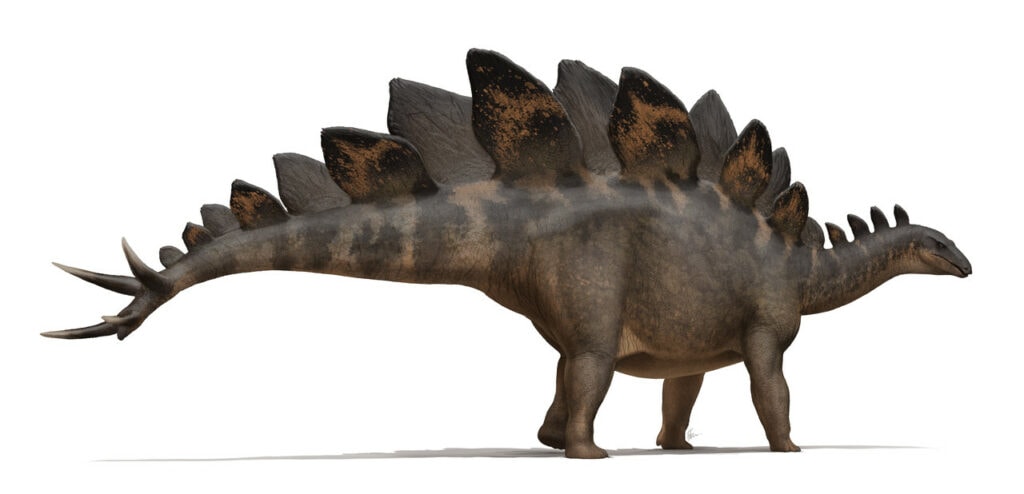
Stegosaurus, meaning “roof lizard”, is amongst some of the most popular dinosaurs. These dinosaurs lived during the late Jurassic Period about 155-145 million years ago.
Stegosaurus were herbivores. Unlike small, carnivorous theropods, these dinosaurs weren’t very fast. Based on fossil evidence, scientists have determined their brain was the size of a plum!
The first Stegosaurus fossil was described by paleontologist and Yale College professor Othniel Charles Marsh in 1877. Some of the fossils found of these dinosaurs were its plates.
The plates of Stegosaurus were attached to the skin, rather than the skeleton. The plates were initially thought to cover the body. However, additional fossil evidence revealed that they stood vertically on the top of the back. Stegosaurus also possessed a spiky tail.
Ceratopsians
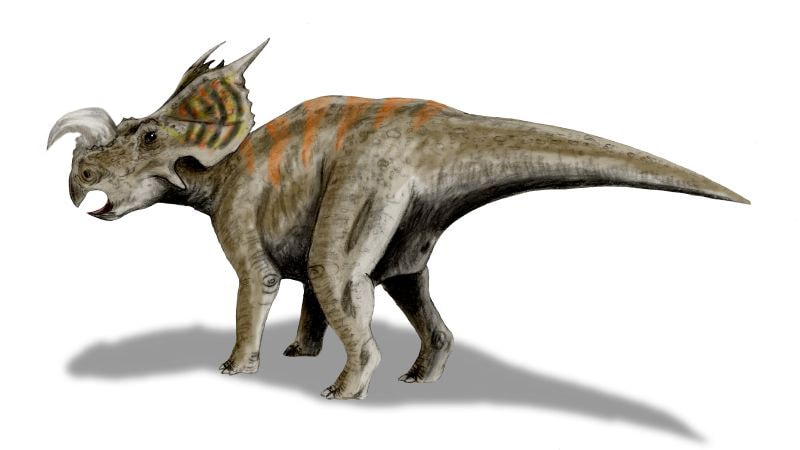
The name of this dinosaur genus may sound familiar to the popularly known Triceratops. The most notable feature of ceratopsians is their beaks. Many species also had horns.
Triceratops
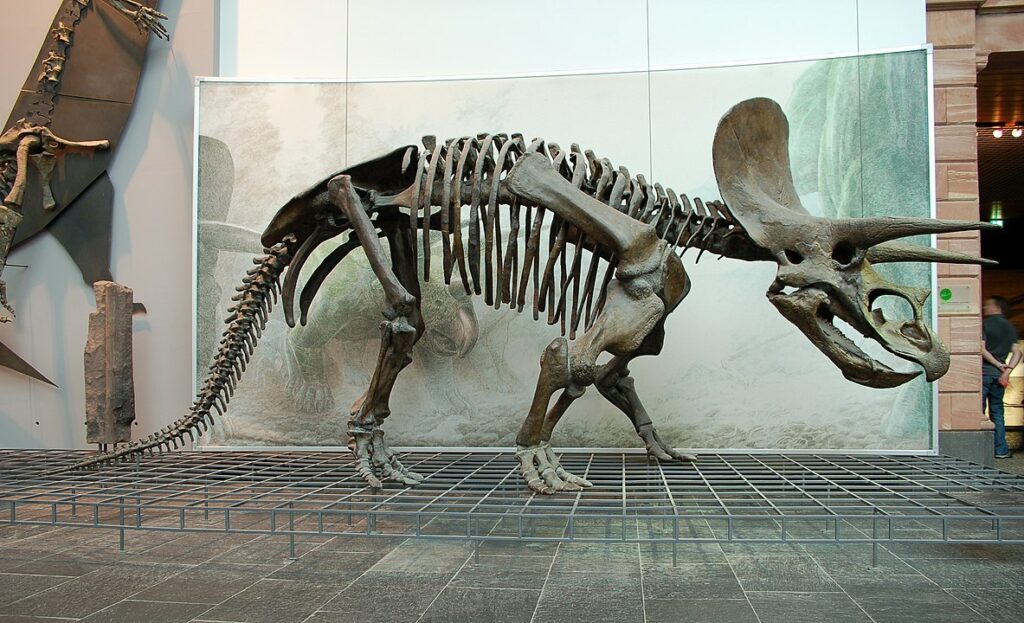
Triceratops were herbivorous quadrupeds. They averaged about 30 ft (9 m) and weighed about 12,125 pounds (5,500 kg). You may recognize this dinosaur by its large neck frill and horned beak.
Triceratops lived in the late Cretaceous period around 68-66 million years ago. The first fossil was described by Othniel Charles Marsh in 1889.
Current fossil evidence suggests Triceratops were solitary. This is unlike many other horned ceratopsians that have been found close together, suggesting they traveled in herds.
In 1997, a Triceratops fossil was found with a horn bitten off. The fossil provided insight into what predators hunted these dinosaurs. The bite marks matched a Tyrannosaurus rex.
Yinlong
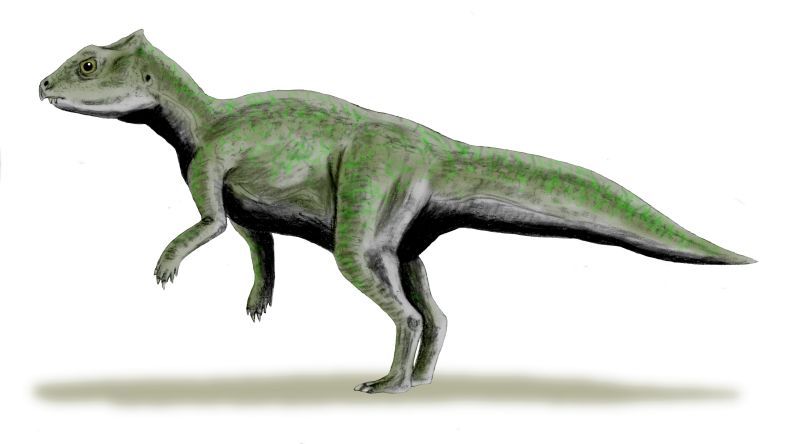
Yinlong were bipedal herbivores that lived in the mid-Jurassic Period around 159-154 million years ago. This genus of dinosaur is one of the earliest known in the ceratopsians group.
Yinlong reached about 4 ft (1.2 m) in length. The species described, Yinlong downsi, is a relatively new species. It was scientifically described and named in 2006. The first fossil of the species was found near the province of Xinjiang in China.
Early Dinosaurs
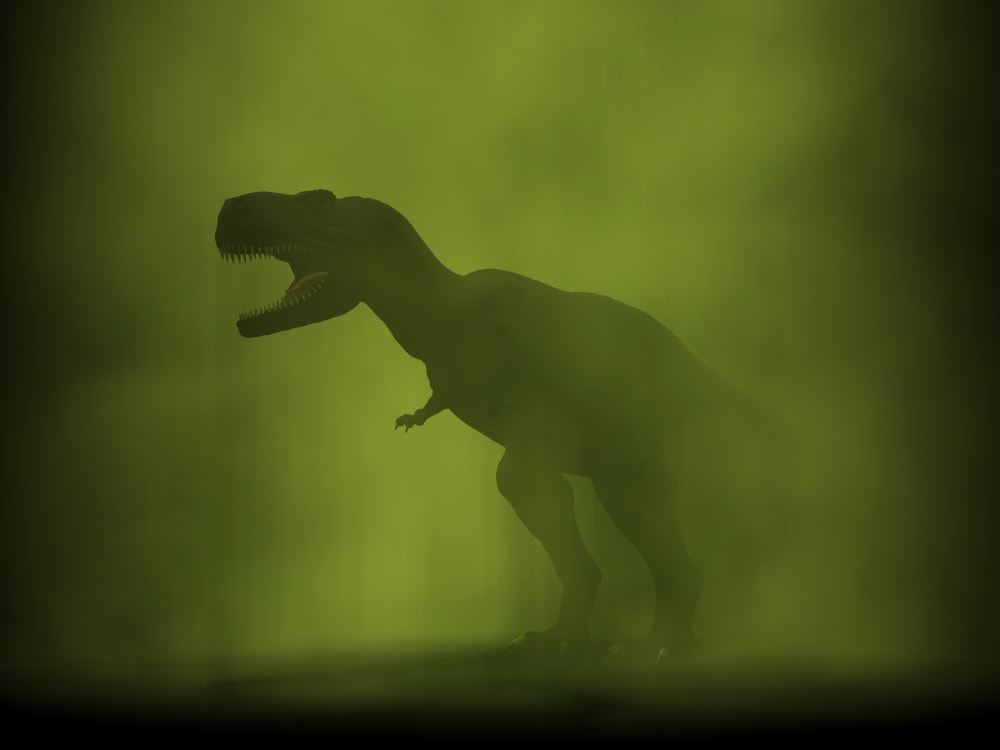
There are several dinosaur genus’ and species that have been described as early dinosaurs. These dinosaurs are from the mid to late Triassic Period.
Herrerasaurus
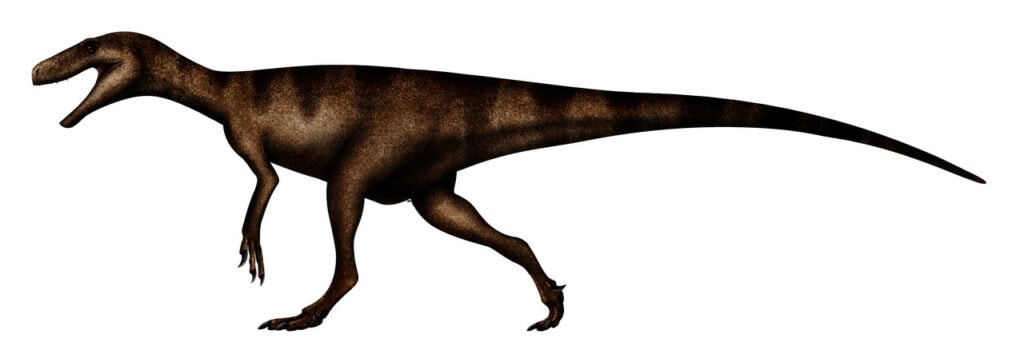
Herrerasaurus is one of the oldest known true dinosaurs that lived about 228 million years ago. It was a carnivorous dinosaur that reached about 10 ft (3 m) in length. The species described, Herrerasaurus ischigualastensis, is named after the place it was found.
The first fossil was discovered in 1958 at the Ischigualasto Formation in Argentina by Victorino Herrera.
It was first described by Osvaldo Reig in 1963 from a partial skeleton. The species was later redesignated by Paul Sereno after a complete skull was discovered in 1988.
Staurikosaurus
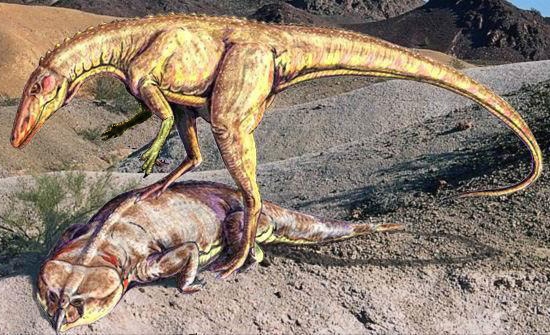
Staurikosaurus lived in the Triassic Period around 227-221 million years ago. This genus of dinosaur was small and carnivorous. These characteristics were fairly common amongst the earliest species of dinosaur known.
It was first described in 1970 by Edwin H. Colbert in his publication A Saurischian Dinosaur from the Triassic of Brazil. The species, Staurikosaurus pricei, was found in the Santa Maria Formation of Rio Grande do Sul.
Ornithopods
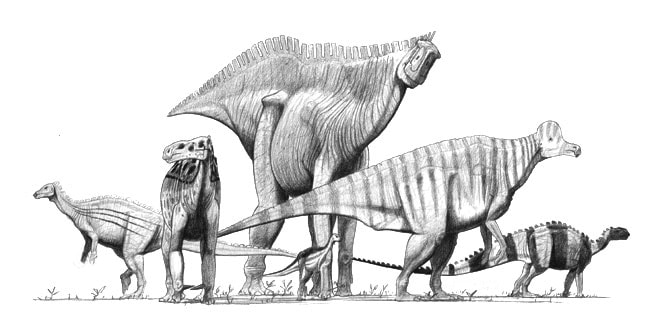
Ornithopods are categorized into two main groups to describe their size. Ornithopods are believed to have evolved from small, bipedal herbivores to larger ornithopods. Most species thrived in the Cretaceous Period.
Iguanodon
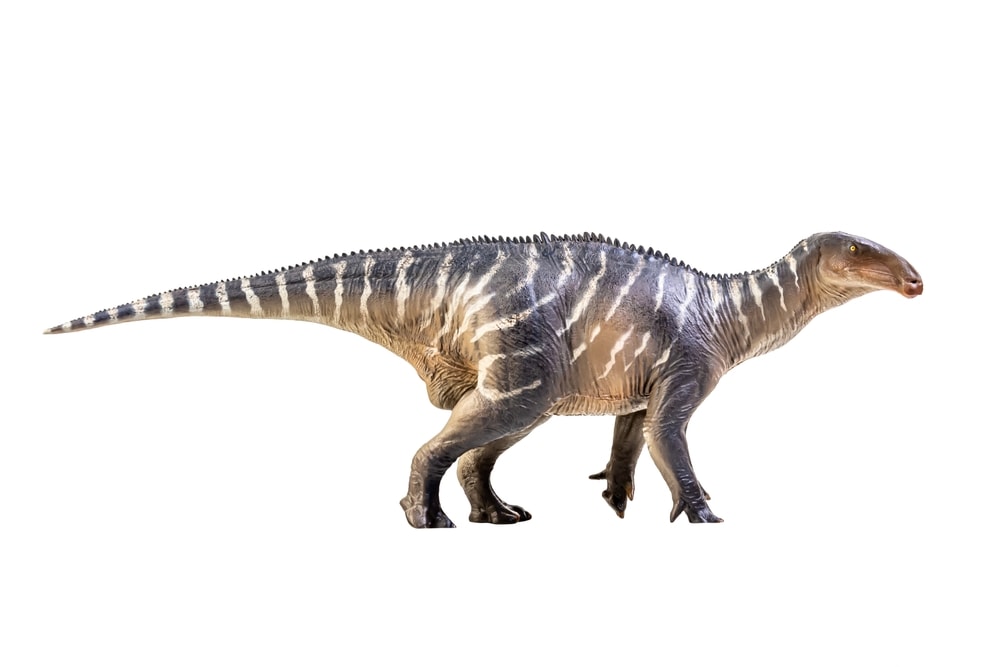
Iguanodon was one of the three dinosaur genus’ grouped together in the clade Dinosauria by Sir Richard Owen. It was one of the earliest dinosaur discoveries in the 19th century.
A collection of Iguanodon teeth were found in Sussex, England in 1822 by Mary and Dr. Gideon Mantell. The teeth were brought to French naturalist Georges Cuvier for further inspection.
The teeth were initially thought to be from a fish, but Cuvier then described them as belonging to an herbivorous reptile.
The genus was described in 1825, making it the second dinosaur to be scientifically described.
Iguanodons lived in the early Cretaceous Period around 140-110 million years ago. Fossils have been found in Germany and the United Kingdom. Based on fossil evidence, Iguanodons may have been bipeds and quadrupeds.
Parasaurolophus
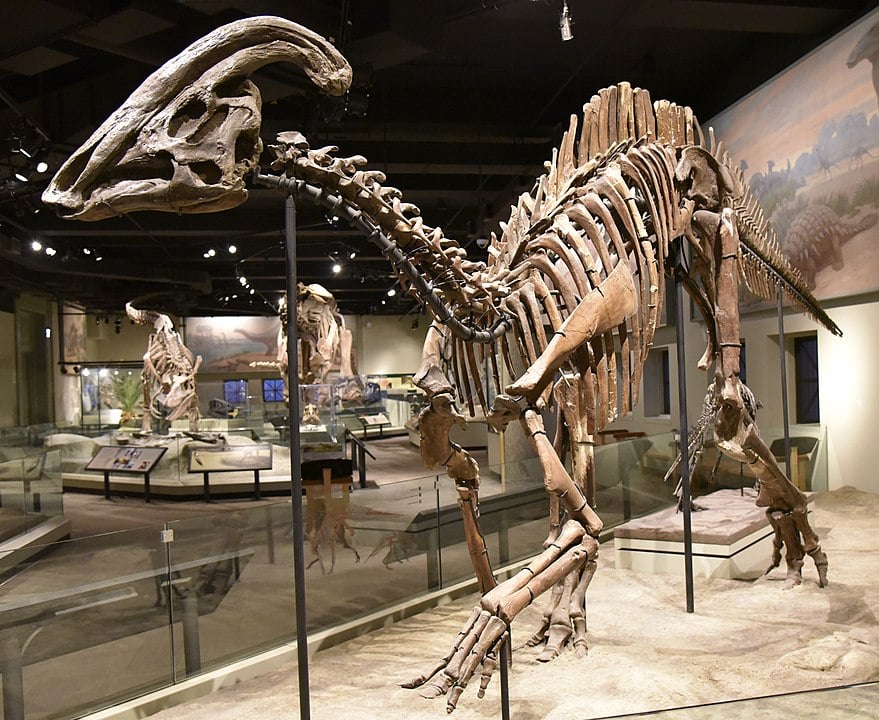
Parasaurolophus were plant-eating ornithischian dinosaurs with a duck-like bill. They averaged about 36 ft (11 m) in length and weighed about 7,716 pounds (3,500 kg). These dinosaurs lived during the late Cretaceous Period around 76-74 million years ago.
Parasaurolophus had a crest on top of their head. It’s believed that the crest had a network of tubes that acted as a trumpet to make warning calls to herd members.
Fossils of these dinosaurs have been found in Canada and the US. Parasaurolophus walkeri was described by Canadian paleontologist William Parks in 1922.
Sauropods
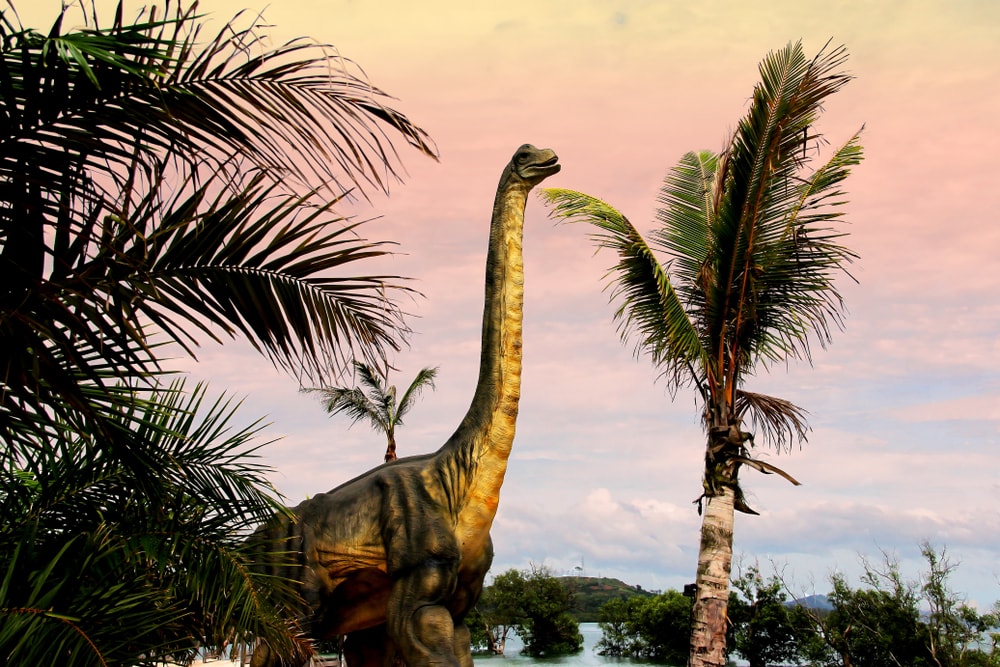
Sauropods were large, herbivorous dinosaurs that had extremely long necks and tails. This genus is classified as saurischian dinosaurs. They walked on all fours and used their long necks to reach high vegetation.
The sauropod family includes some of the largest dinosaurs known to roam Earth.
Brachiosaurus
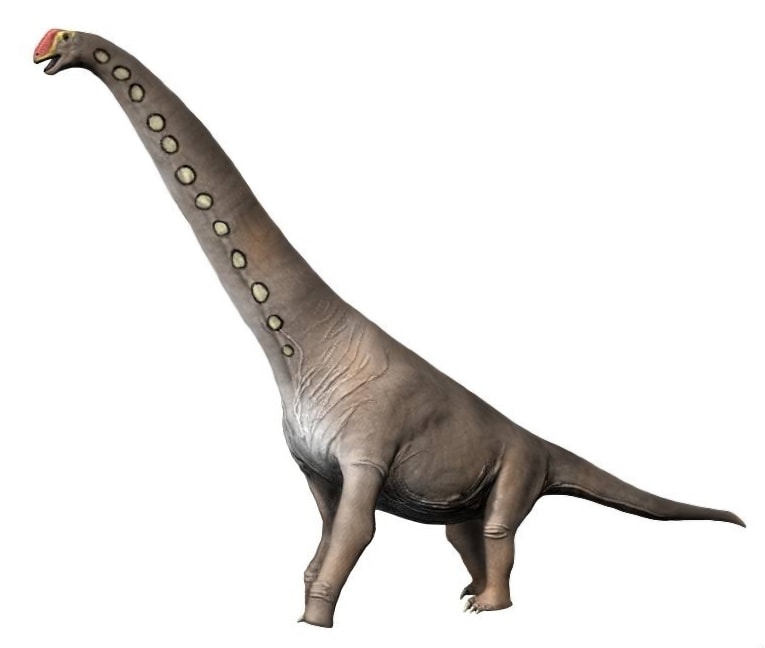
Brachiosaurus lived in the late Jurassic Period around 155-140 million years ago. Fossils have been discovered in the US, Tanzania, Algeria, and Portugal. These dinosaurs reached a whopping 98 ft (30 m) in length.
The first Brachiosaurus was discovered as a partial skeleton by American paleontologist Elmer Riggs and his assistant H. William Menke. Riggs described the species, Brachiosaurus altithorax, in 1903.
Another species, Brachiosaurus brancai, was discovered in East Africa in 1910.
Patagotitan
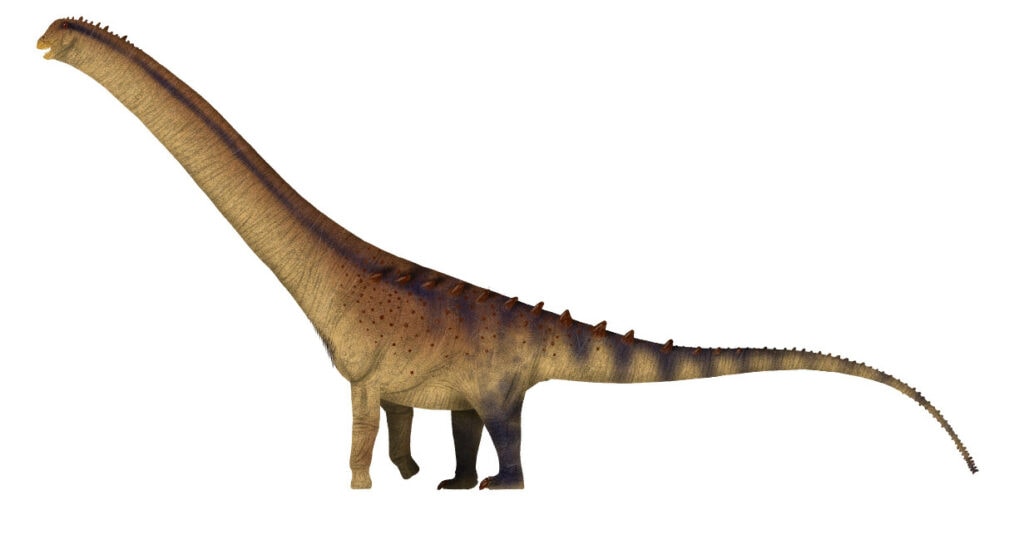
Patagotitan is currently one of the biggest dinosaurs discovered. It was recently described in 2017 by a team of paleontologists. Patagotitan is a sauropod belonging to the Titanosaur group.
Estimates of its size vary, but scientists believe it was about 123 ft (37.5 m) long and weighed between 93,696-157,410 pounds (42,500-71,400 kg)! Patagotitans lived in the early Cretaceous Period about 101 million years ago.
The first fossil was discovered in 2010 at La Flecha Ranch in Patagonia, Argentina. The discovery also led paleontologists to find fossils belonging to at least six different dinosaurs on the ranch.
Theropods
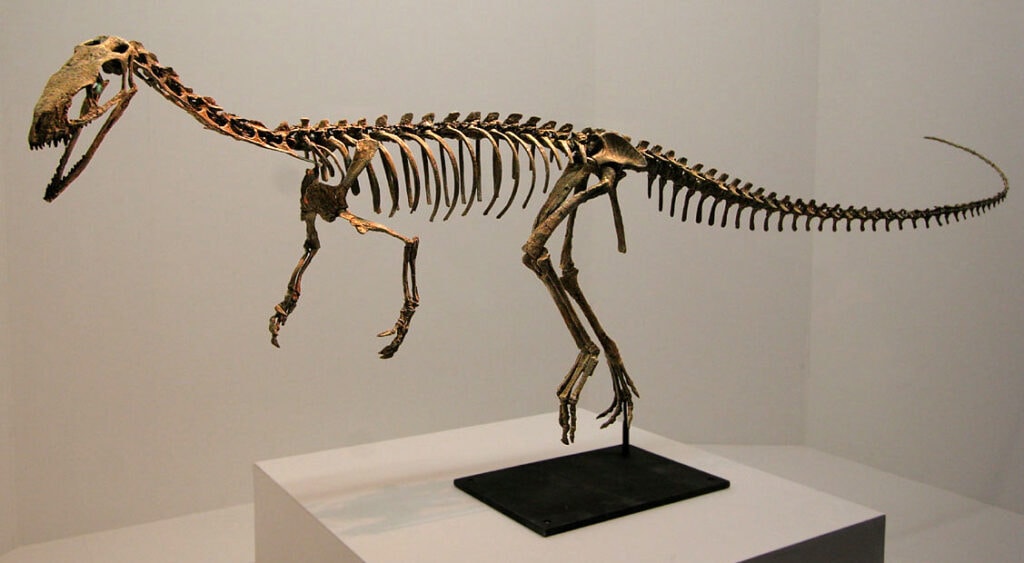
Theropods are a group of dinosaurs that walked on two legs and had claws. Theropods are split into two groups, including small theropods and large theropods. Research suggests that birds may be descendants of a group of small non-avian theropods.
Velociraptor
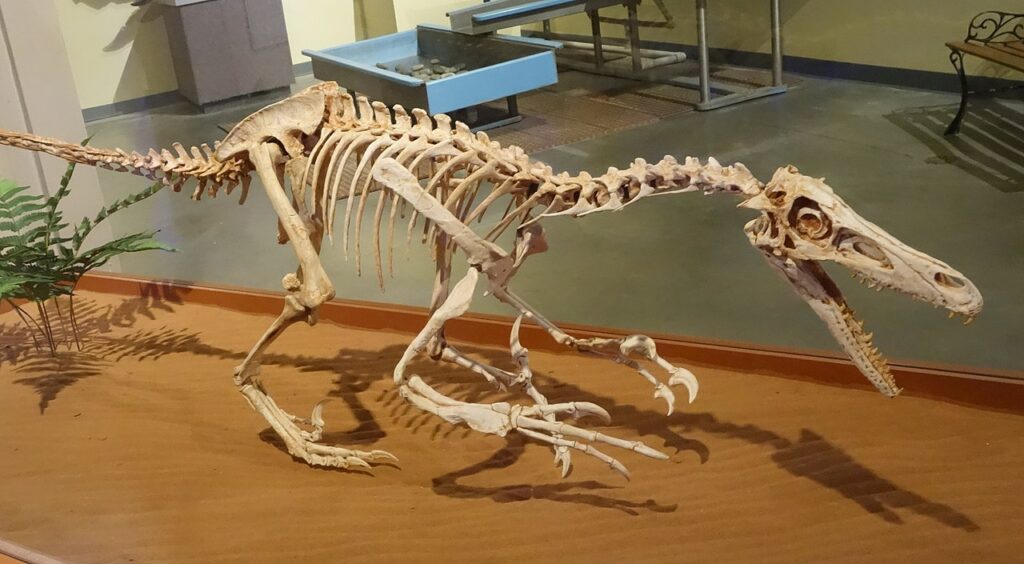
Velociraptors were small, carnivorous theropods that reached about 6 ft (1.8 m) in length. They weighed about 15 pounds (7 kg).
The first Velociraptor fossil was found in the Gobi Desert of Mongolia during an expedition headed by the American Museum of Natural History (AMNH). Former AMNH president Henry Fairfield Osborn discovered the fossil and described it in 1924.
Velociraptors were bipeds that had a lot of sharp teeth used to rip through prey. They lived during the late Cretaceous period around 74-70 million years ago.
Recent studies suggest that these dinosaurs may have possessed feathers due to feather structures found in other fossils of closely related small theropods. However, they weren’t capable of flight.
Megalosaurus
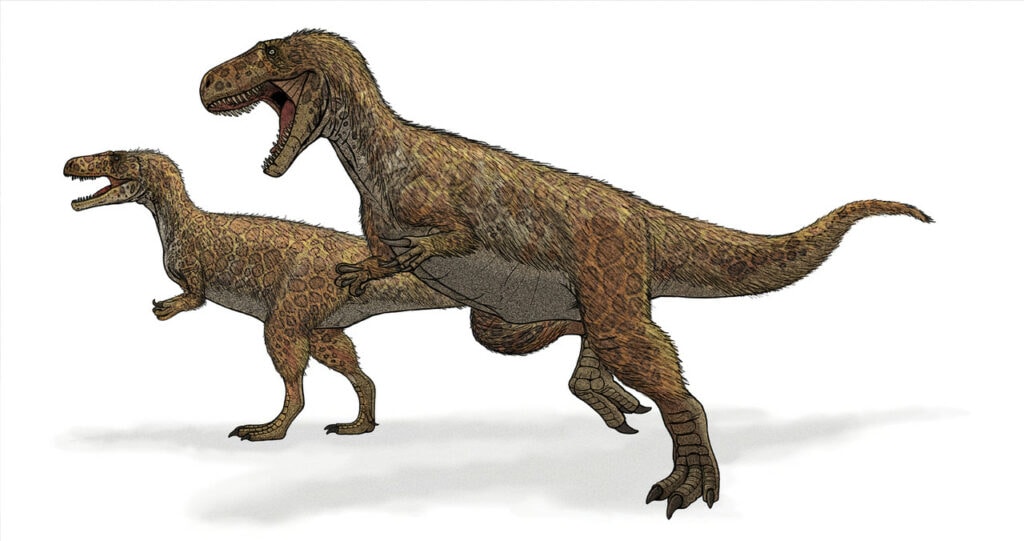
Megalosaurus is accepted as the first dinosaur to be discovered and validly named.
A fossil found by Dr. Robert Plot in the mid-17th century may have been the first Megalosaurus fossil discovered.
Dr. Plot published an illustration of the bone in his book entitled The Natural History of Oxford-shire. However, Dr. Plot didn’t know what it belonged to. This fossil has since been lost, so it cannot be confirmed as a Megolosaurus fossil by modern technology.
The first confirmed Megalosaurus fossil was officially described by William Buckland in 1824. The fossil was found in a quarry in Stonesfield, England.
Megalosaurus was a large, carnivorous theropod that lived in the mid-Jurassic around 170-155 million years ago.
Tyrannosaurus
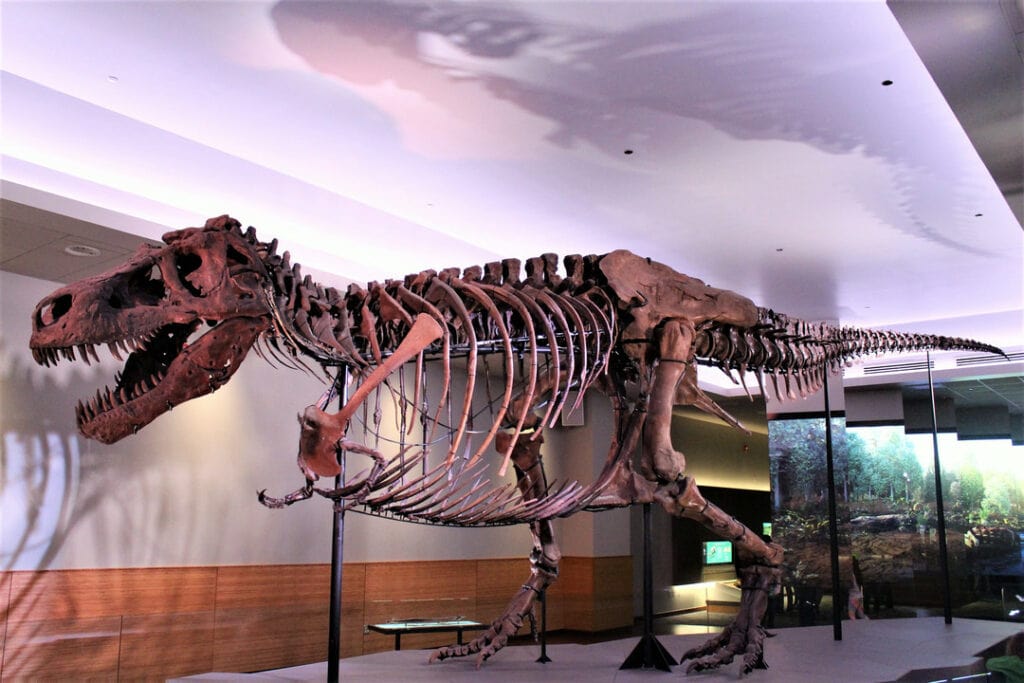
The famous Tyrannosaurus, meaning “tyrant lizard”, was a large theropod. It walked on two legs and had a powerful bite with 60 sharp teeth.
The first Tyrannosaurus fossil was found in Hell Creek, Montana by Barnum Brown in 1902. Henry Fairfield Osborn named the species Tyrannosaurus rex in 1905. Tyrannosaurus fossils have also been found in Canada.
The Tyrannosaurus rex was about 39 ft (12 m) tall and weighed about 15,432 pounds (7,000 kg). It lived during the late Cretaceous Period about 68-66 million years ago.
You May Also Like: 39 Fascinating Amazon Rainforest Animals, Birds & Insects
Why Did Dinosaurs Go Extinct?
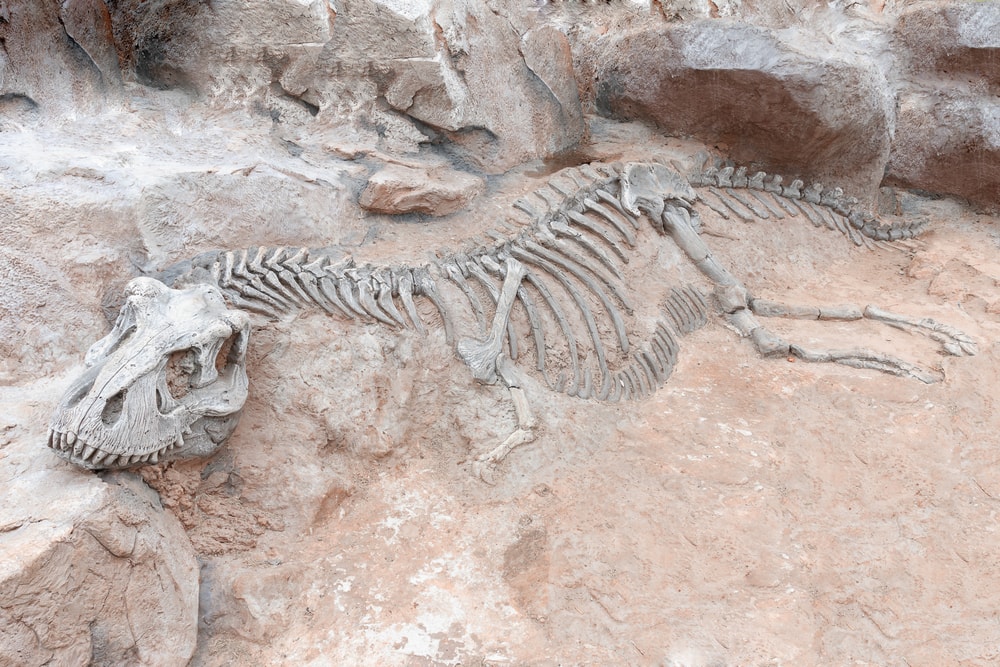
At the end of the Cretaceous Period, there was a mass extinction event believed to be caused by a meteorite striking Earth. The meteorite hit Earth in the Gulf of Mexico near the Yucatán Peninsula about 66 million years ago.
The discovery of the rare element iridium in 66-million-year-old rocks strengthens the case that a meteorite caused the mass extinction. The point of impact was named the Chicxulub crater.
The meteorite may have directly killed many different species. However, other changes as a result of the impact may have played a role in the mass extinction of most plants and animals.
The impact may have triggered massive volcanic eruptions and other natural disasters that wiped out nearly all dinosaurs. The mass extinction event is the precursor to the Cenozoic Era, or the age of mammals.
You may also like: Are Turtles Reptiles? A Dive Into The World Of Turtles
Are dinosaurs reptiles FAQs
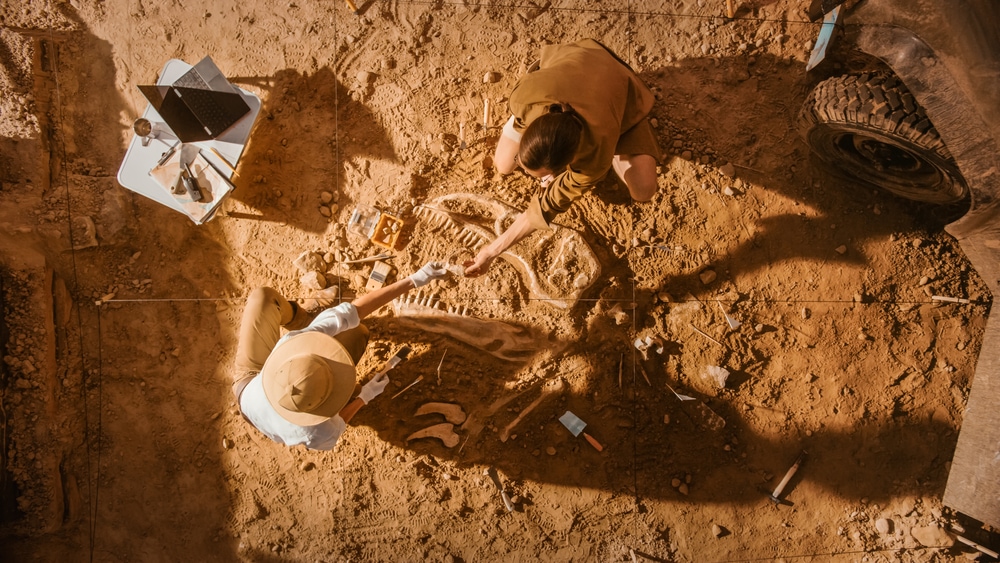
Is a crocodile a dinosaur?
Crocodiles are reptiles, but they aren’t dinosaurs. They belong to the group Archosaurs, which also included dinosaurs. Crocodiles are characterized by their sprawl-like stance. This is one of the main features that separates dinosaurs from other true reptiles.
What were dinosaurs called before they were named?
Dinosaurs didn’t have an official name before Sir Richard Owen established the clade Dinosauria. Although dinosaur bones had been discovered already, nobody knew what they belonged to or they were incorrectly identified.
What animal did dinosaurs evolve from?
The exact species or group of animals that dinosaurs evolved from is still up for debate.
Some of the oldest dinosaur fossils found were excavated in the Ischigualasto Formation. However, these fossils were already recognizable dinosaurs. This means that there is a missing piece in the dinosaur lineage that connects dinosaurs with the animals they evolved from.
One theory is that dinosaurs may have evolved from a family called silesaurids. These were medium-sized, quadruped reptiles that had lizard-like features. However, a large gap of about 10 million years separates silesaurids from dinosaurs.









